HOW MASSAGE CAN HELP RESPIRATORY CONDITIONS
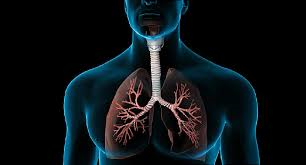
It is a common belief that massage is for stress and tight muscles but it can also highly beneficial in respiratory problems, whether due to a medical condition, allergies, pregnancy or as part of post surgical rehabilitation. When the accessory respiratory muscles at the front and back of the body are tightened, normal breathing becomes restricted but specific massage techniques can lengthen and relax these muscles to improve breathing capacity and function. Restricted breathing is a common sign of stress, and shallow short breaths replace a natural breathing pace, due to the muscles around the rib cage and abdomen tightening, constricting air. In this state it is almost impossible to reach a relaxed state, bringing about issues such as panic attacks. Massage can retrain the body to relax and consequently improve breathing, by relaxing the muscles, and also helping to improve awareness stress levels.
Examples of respiratory issues that may be improved through massage include:-
• allergies
• sinus problems
• asthma - airways are persistently inflamed, and may spasm, causing wheezing and shortness of breath
• bronchitis - A sudden infection of the airways, usually by a virus, sometimes with a chronic productive cough, as in chronic bronchitis which is a form of COPD
• bronchiectasis - a long-term condition where the airways become abnormally widened, leading to a build-up of excess mucus, making the lungs more vulnerable to infection
• pneumonia
• cystic fibrosis - a genetic condition causing poor clearance and accumulation of mucus from the bronchi, resulting in repeated lung infections
• chronic obstructive pulmonary disease(COPD/COAD) - lung conditions defined by an inability to exhale normally, which causes difficulty breathing
• emphysema - lung damage allows air to be trapped in the lungs in this form of COPD, resulting in difficulty exhaling
• lung cancer
HOW MASSAGE THERAPY PROMOTES DEEPER AND EASIER BREATHING
• can lengthen and relax the accessory respiratory muscles to improve breathing capacity and function
• can improve posture, which leads to opening of the chest area, structural alignment and rib cage expansion needed for optimal lung function
• impacts on the parasympathetic nervous system which slows and regulates breathing rate, encouraging deep breathing
• tapotement and vibration techniques performed on the back can loosen mucus in the lungs and increase airway clearance for better lung function
Benefits of Improving Breathing:-
• controlled breathing aids relaxation
• retrains the mind to relax before stress becomes chronic or damaging
• increases energy level
• aiding a speedy recovery
• helping to keep airways open during pregnancy where the muscles are compensating for the changing body and internal organs are under pressure from the growing foetus, and help with breathing techniques and reducing anxiety in labour
MASSAGE THERAPY FOR ASTHMA

• relaxes your muscles and opens up your lungs, encouraging good breathing technique
• stress and anxiety are treated like an allergen and can cause spasm and constriction of airways and difficulty breathing. Massage manoeuvres the muscles to relieve stress and anxiety
• massage for asthma not only helps to treat the symptoms, but also improves circulatory, muscular and nervous systems
• remove the substances that contribute to asthma attacks. Cold, dry air causes the bronchospasms and airway constriction, so massage can help to decrease symptoms by providing warmth through friction, while easing muscle tension and decreasing the production of mucous in the lungs, thus improve breathing . A massage in warm, temperate air will not only relax the body's response to these substances but also offer mental relaxation
Massage does not replace the need for inhalers, but may reduce their usage. Peak flow measurements can be used to assess the effectiveness of the treatments.
MASSAGE FOR COPD
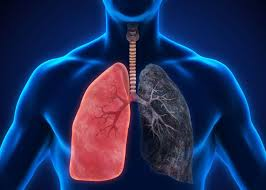
Massage treatments will vary according to the stage of COPD. Massages will help you to relieve stress and reduce pain, just be aware of which type of massage will suit you best based on the stage of your COPD.
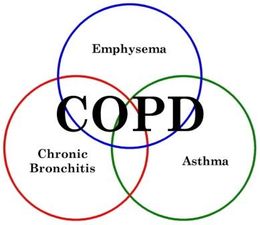
Stage One
• occasional bouts of shortness of breath and coughing
• you can choose from many different types of massage eg. you could start with Swedish massage and then move on to Thai massage or deep tissue massage, which could include some myofascial release therapy to work on the connective tissue between muscles which can get tight and restrict movement
Stage Two
• involves breathing difficulties upon exertion
• all types of massage can be selected since there is no exertion involved. Thai massage may be problematic in that you will be actively moving into positions you may not be used to, potentially causing exertion and breathing difficulties
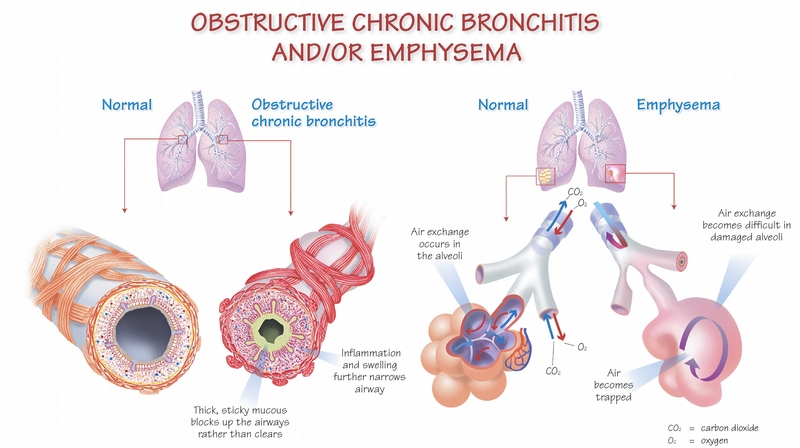
Stage Three
• more difficult to do simple daily activities
• only massage where you allow the massage therapist to do everything for you eg. Swedish, deep tissue, hot stone massage, reflexology foot massage, lymphatic massage
Stage Four
• severe reduction in airflow and difficulty moving
• massage must not require active participation. If you can’t lie face down the massage in a scan be done in a seated position. Aromatherapy massage using essential oils such as peppermint, eucalyptus and wintergreen can help to clear waste from the lungs and sinuses
Things to remember about massage for COPD:-
• the benefits of massage can be felt immediately, but the benefits will increase with regular massages so ideally make weekly appointments or 10 weeks minimum. Then evaluate your progress
• be fully hydrated when you get your massages and ensure the same for two full days after your massage to assist your body in detoxification
MASSAGE FOR CYSTIC FIBROSIS .
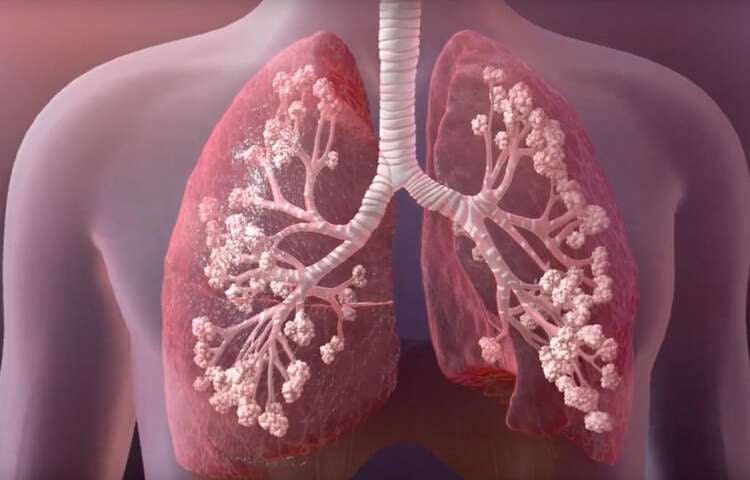
• affects approximately 30,000 children and adults
• approximately 1,000 new cases of CF diagnosed each year
• average life expectancy as of 2017 has increased to the mid-40s
• a genetic condition which effects breathing and digestion, due to thicker than normal mucus forming in both the lungs and pancreas
• usually given oxygen to help with the symptoms, but massage can improve breathing, when focused on the respiratory muscles, potentially reducing the need for oxygen therapy
• being unable to breathe properly, for long periods of time, has heavy physical, emotional and mental implications, so by easing breathing difficulties, massage can reduce anxiety and improve general mood, promoting better life management and pursuit of goals
• fluid formation prevents the body from utilising chloride, a component of salt, in cellular fluid osmosis, causing the fluid to become a thick, sticky secretion which blocks the airways. This reduces air ventilation, making breathing difficult, and can increase infections, inflammation and respiratory complications
• cardiovascular exercise where possible should work alongside massage to improve lung capacity
• research shows significant reduction in pain, and improved breathing, both in the acute and clinically stable clients
• myofascial release on muscles around the rib cage can be beneficial with breathing difficuties ie.Rectus Abdominis, Oblique muscles, Scalenes, Intercostals, Serratus anterior & posterior, Quadratus Lumborum and Erector Spinae muscles
• vigorous styles of massage, such as sports massage, vibration and tapotement techniques can encourage movement of phlegm and fluids
Common Signs and Symptoms of CF:-
• salt laden skin
• persistent productive cough
• frequent bouts of pneumonia, bronchitis, similar lung conditions
• shortness of breath
• wheezing breath
• bowel challenges
• poor weight gain efforts
Massage Considerations for CF Patients:-
• thoroughly clean and sanitize your massage room space before seeing a CF patient due to increased risk of infection
MASSAGE FOR BRONCHIECTASIS
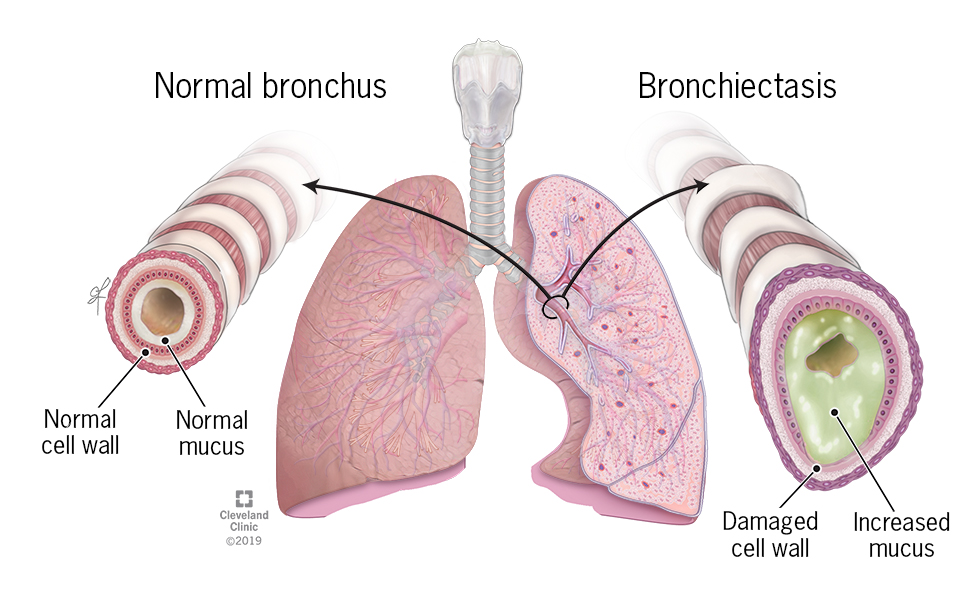
• the airways of the lungs become abnormally widened, leading to a build-up of excess mucus that can make the lungs more vulnerable to infection
• clearing sputum from the lungs can reduce the number of infections and reduce your cough
• sports massage and techniques such as tapotement and vibrations can help clear sputum and encourage deep breathing through relaxation
